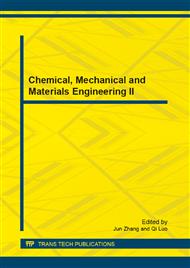p.468
p.474
p.479
p.485
p.491
p.497
p.505
p.513
p.517
Solution to Holes Machining Path Planning by Intelligence Computation
Abstract:
The rapid development of electronic information industry has posed serious challenges to the electronics manufacturing technology and intense competition in the market. For the most basic parts of electronic components - holes of the printed circuit board processing efficiency issues need to be resolved, the machining tool path optimization techniques. Optimize holes machining path reducing tool movement time is an effective way to improve production efficiency. Machining path optimization problem is transformed into a traveling salesman problem, shortest processing path established path optimization mathematical model on the basis of the model, the analysis of a variety of typical optimization algorithm, simulated annealing algorithm, genetic algorithm, ant colony algorithm, particle swarm optimization, comparing the various algorithms, based on theoretical analysis and experimental research, for the complexity of the algorithm evaluation, flexibility, local optimum probability, feedback information utilization and weight.
Info:
Periodical:
Pages:
491-496
Citation:
Online since:
May 2013
Authors:
Price:
Сopyright:
© 2013 Trans Tech Publications Ltd. All Rights Reserved
Share:
Citation:


